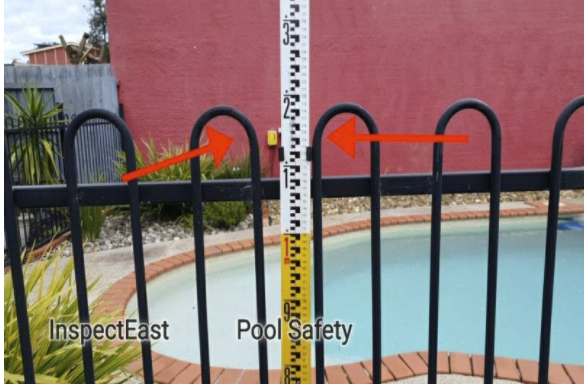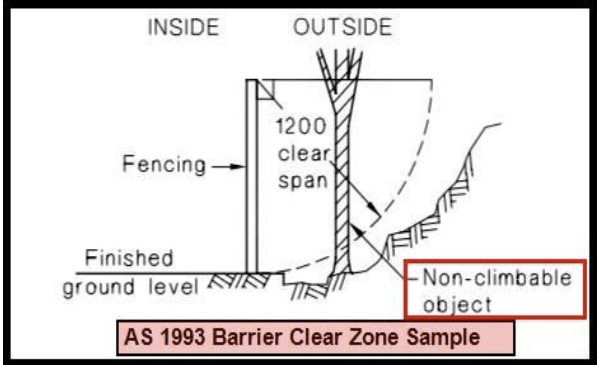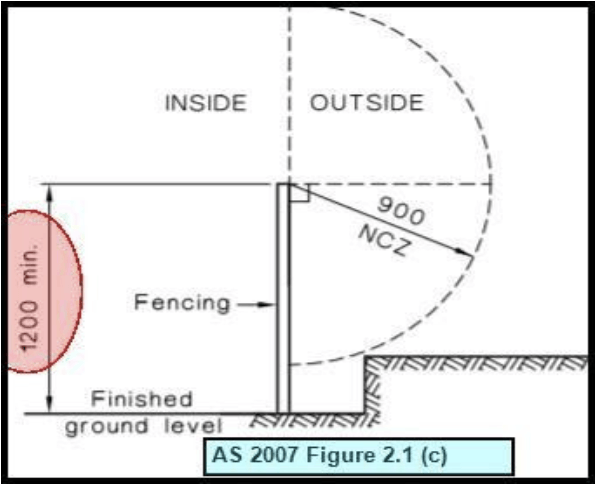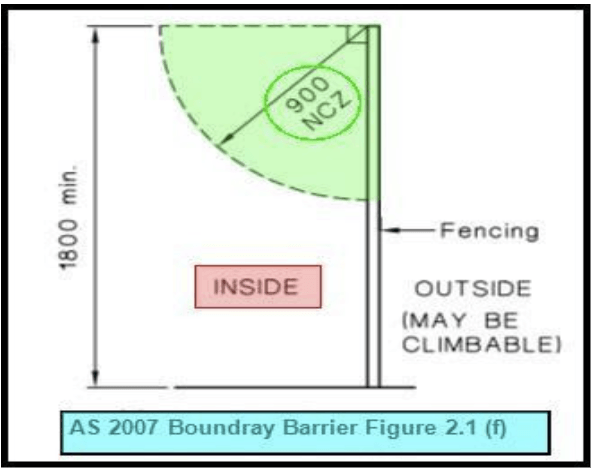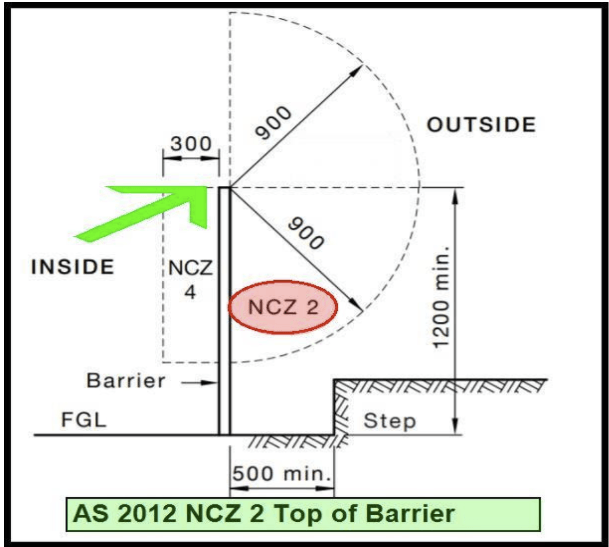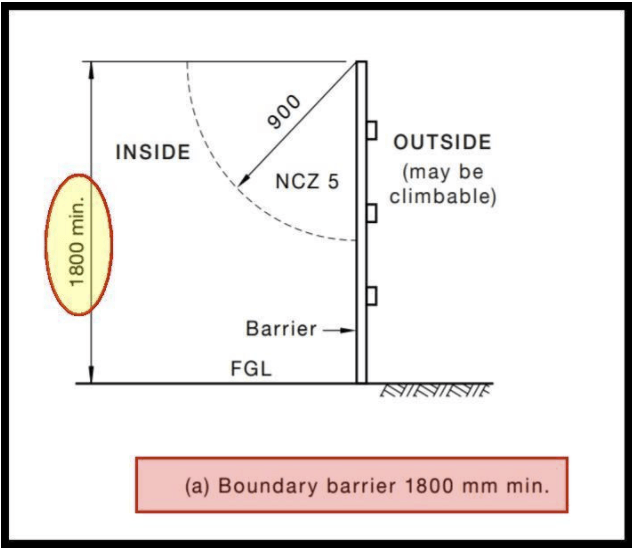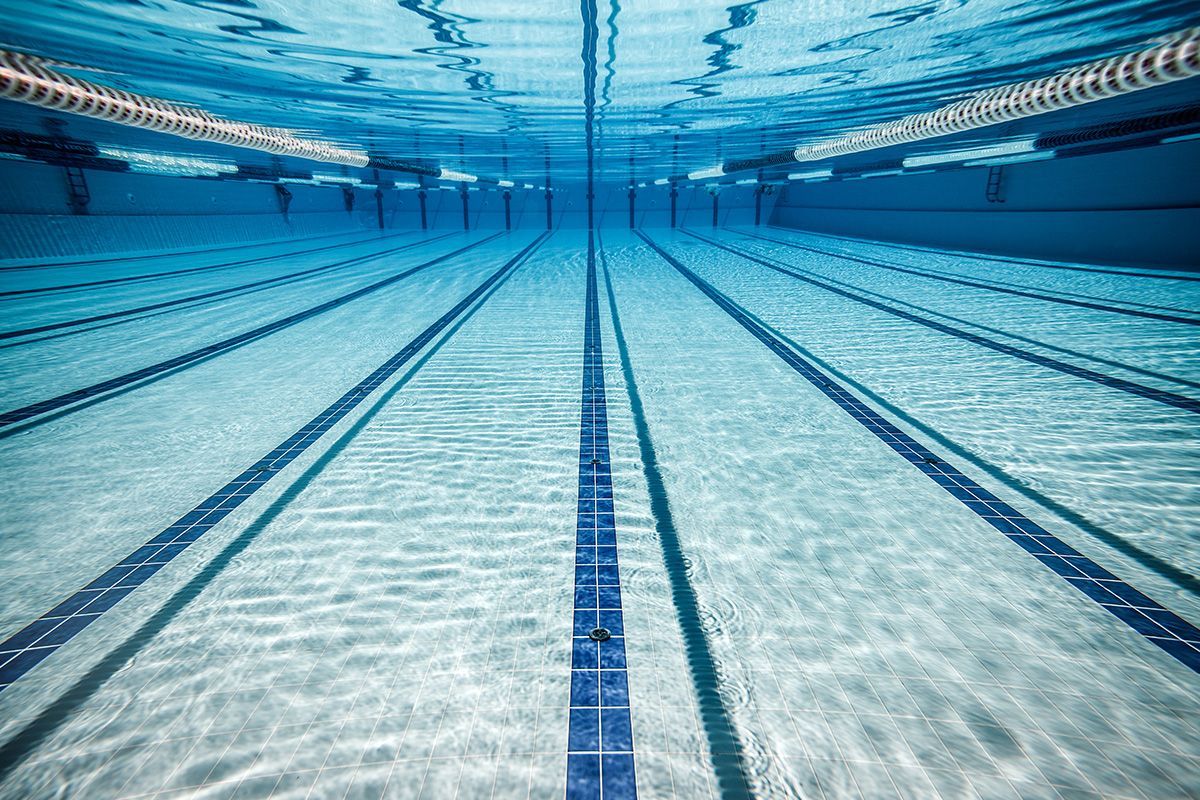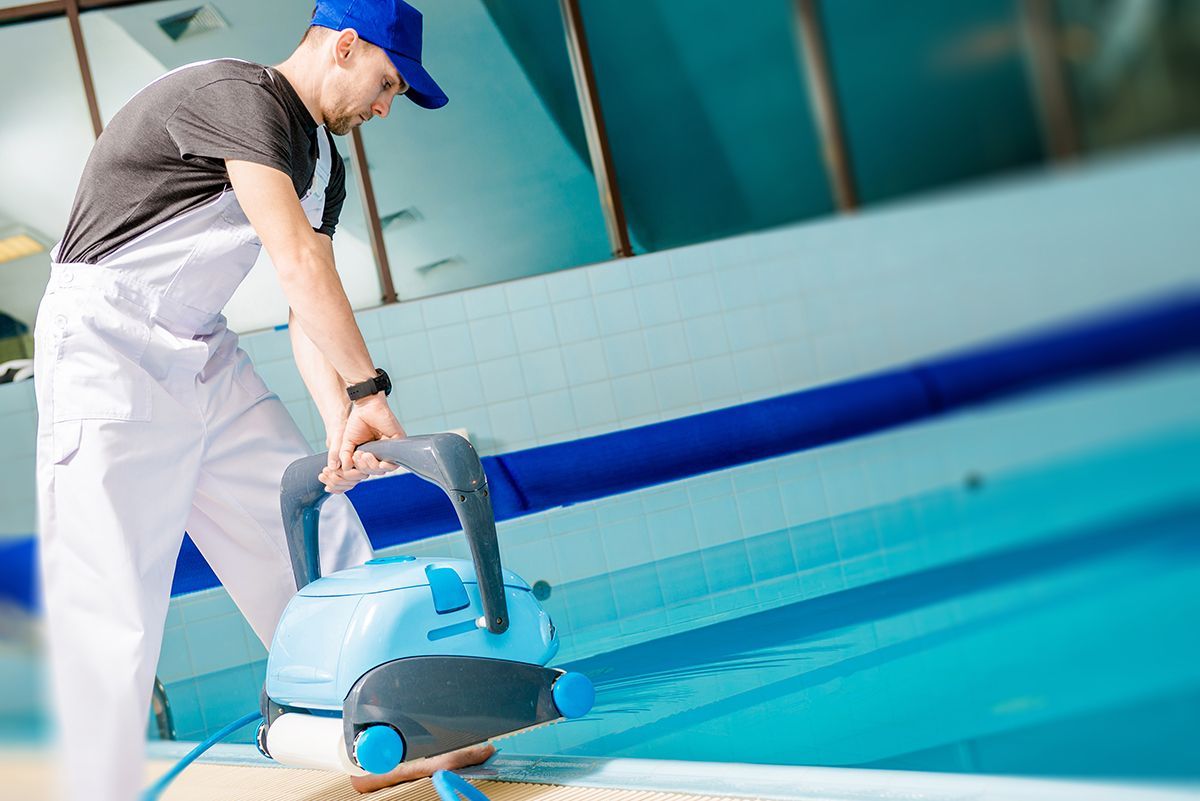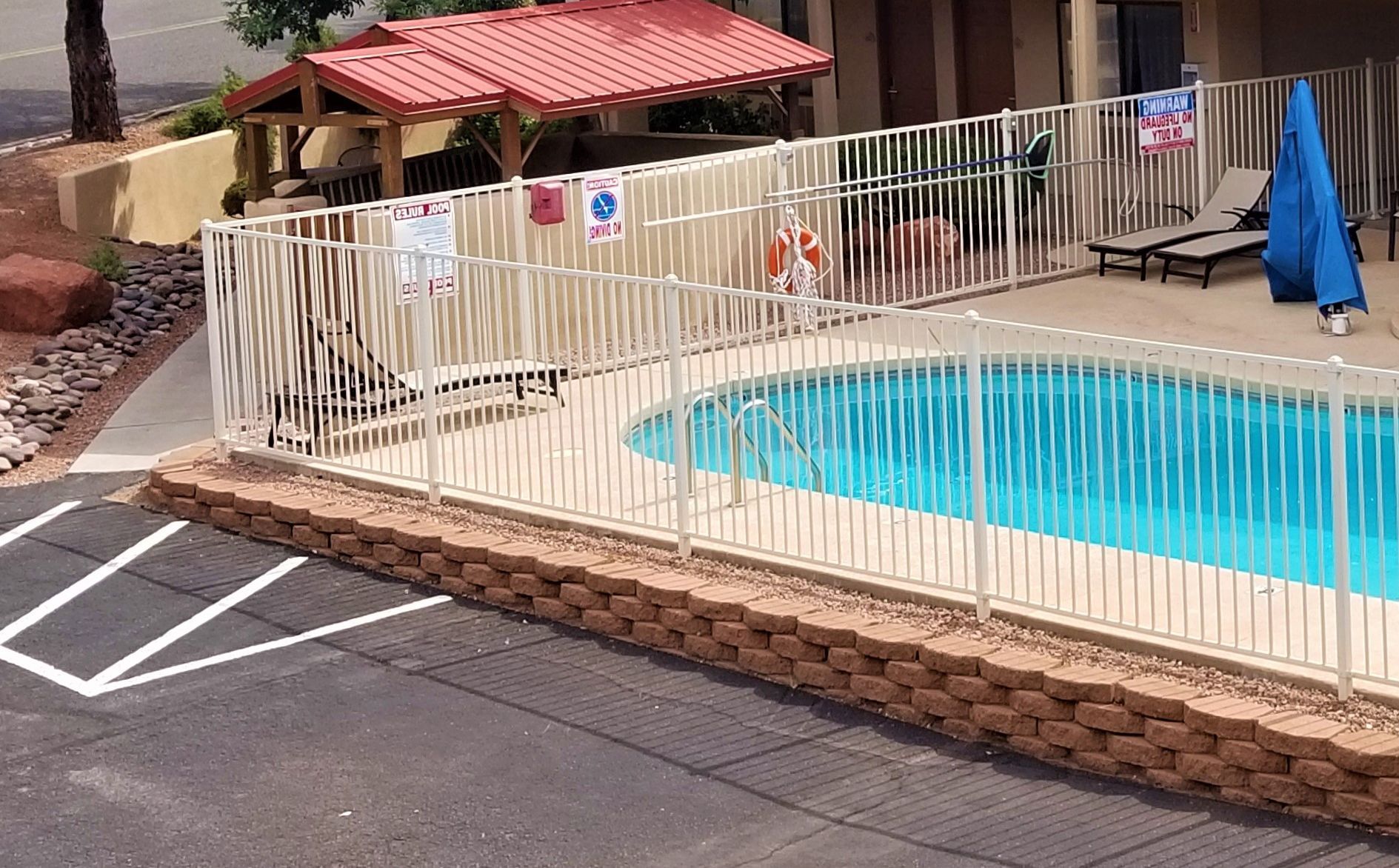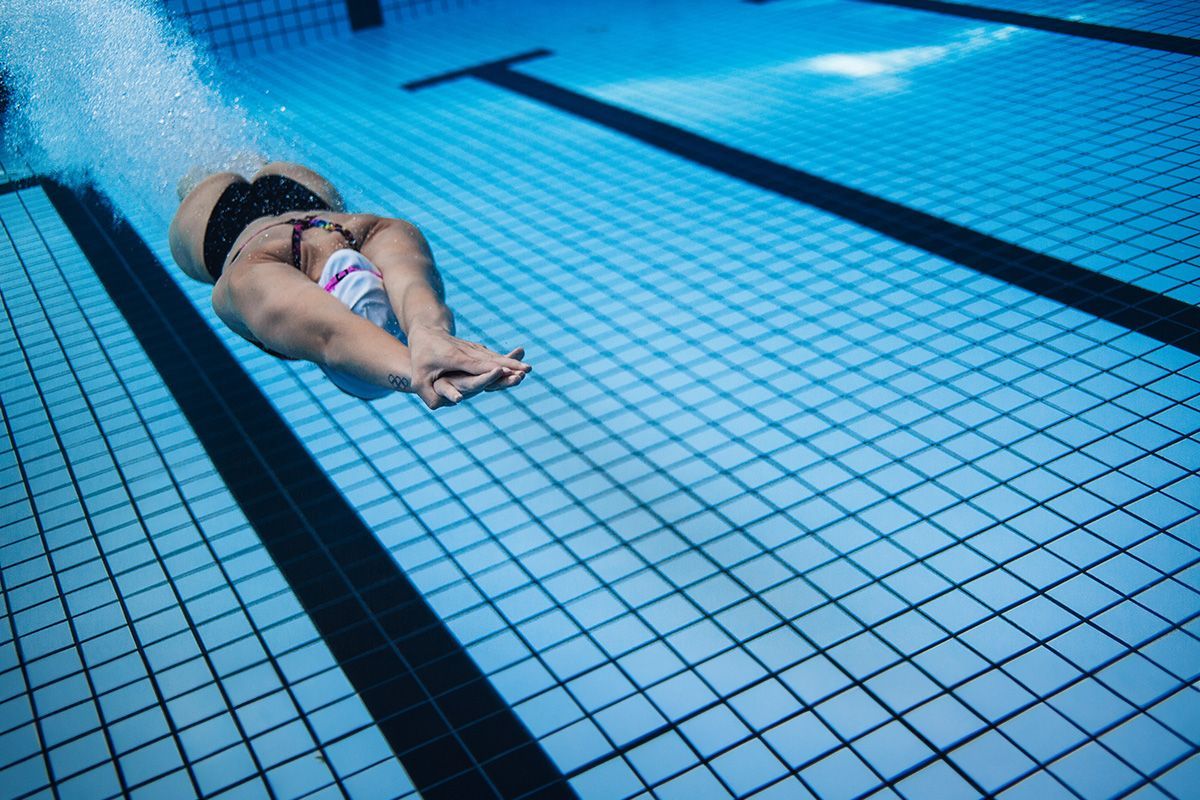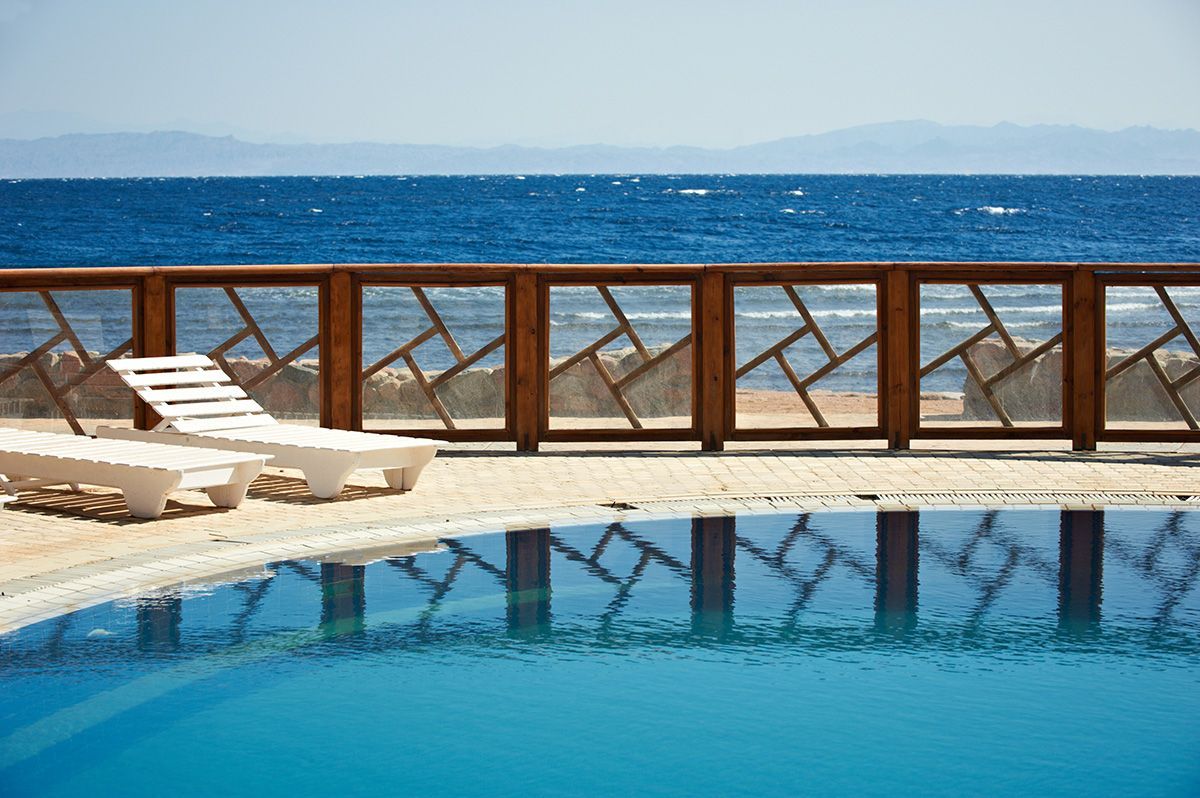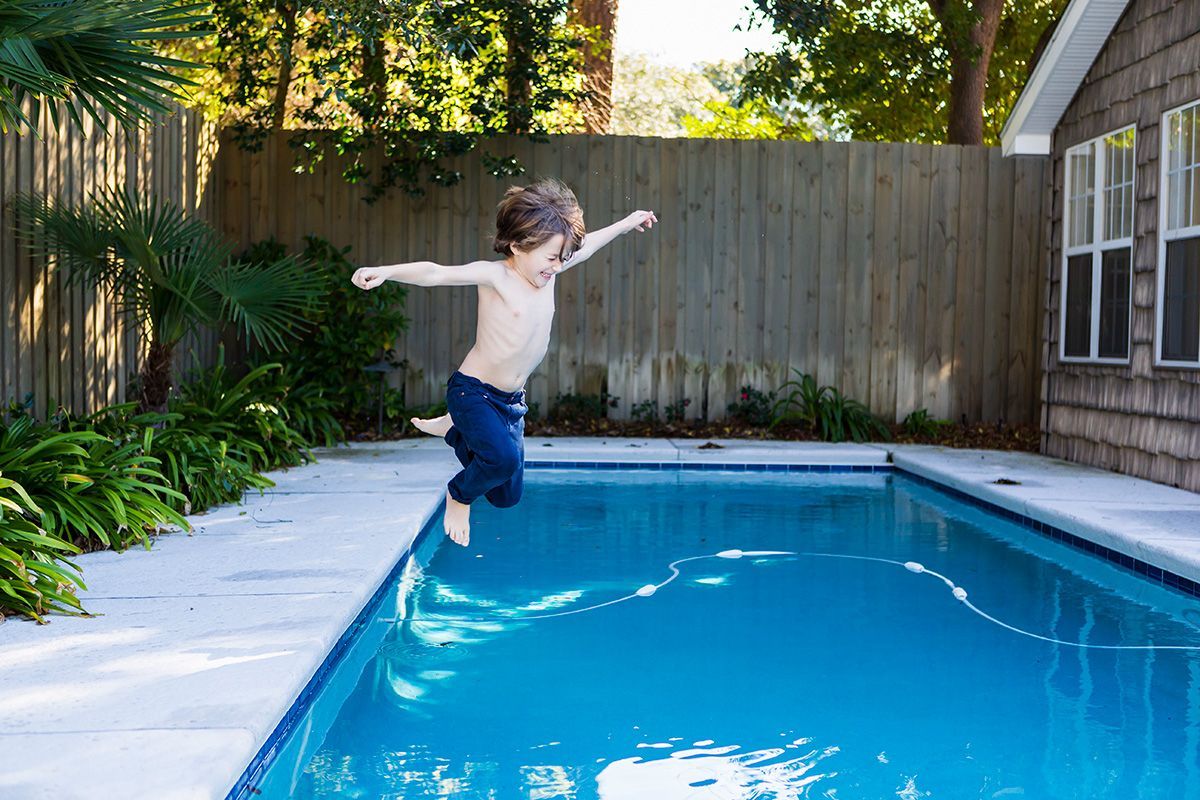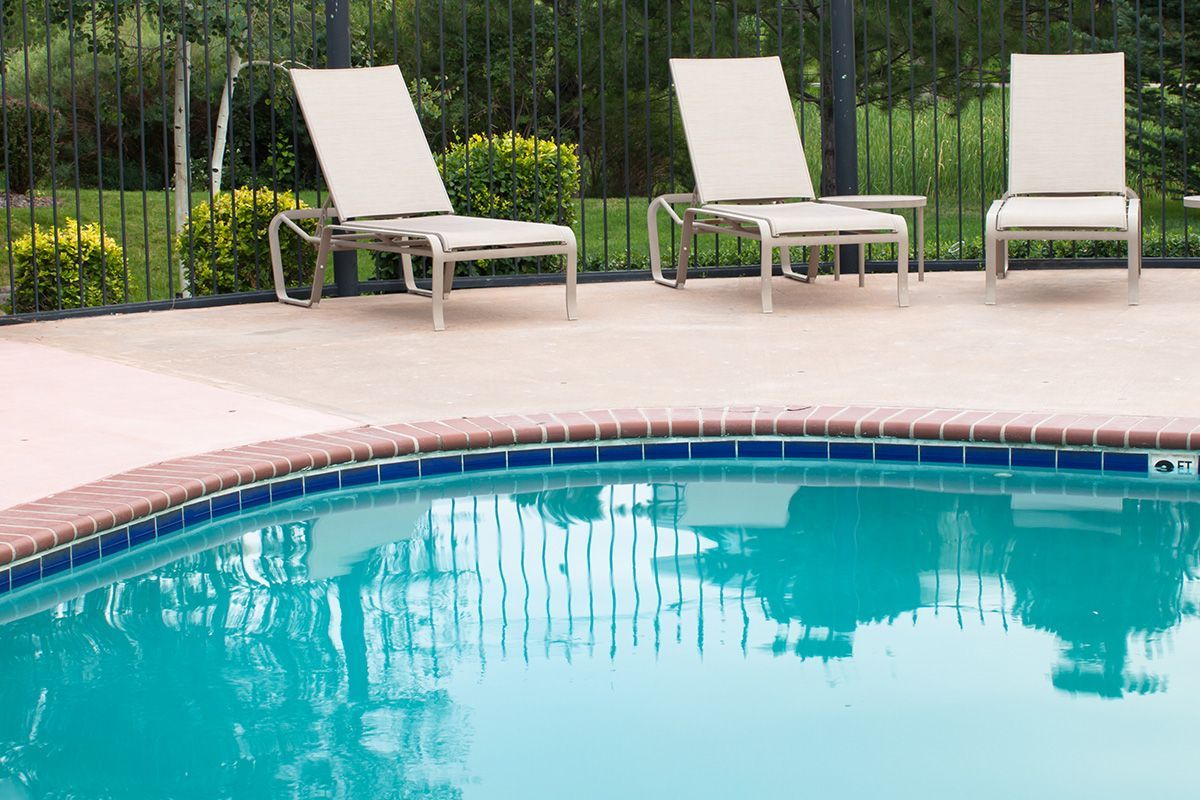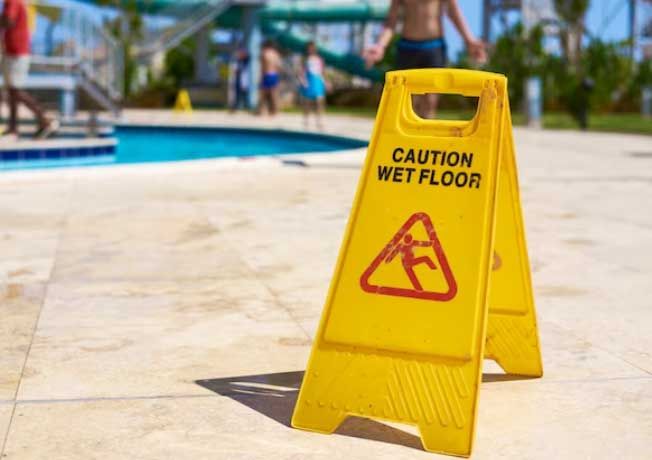The fences and pool gates shall have an effective height perpendicular height of at least 1200mm (1.2meters) at any point along their length, along the outside of the fencing.
Some important factors come into play here, the height along the length of the fence shall be measured perpendicular to the finished ground level.
Have careful consideration when using different types of fencing, also items that are close to the fencing that could reduce the overall height of the safety barrier.


